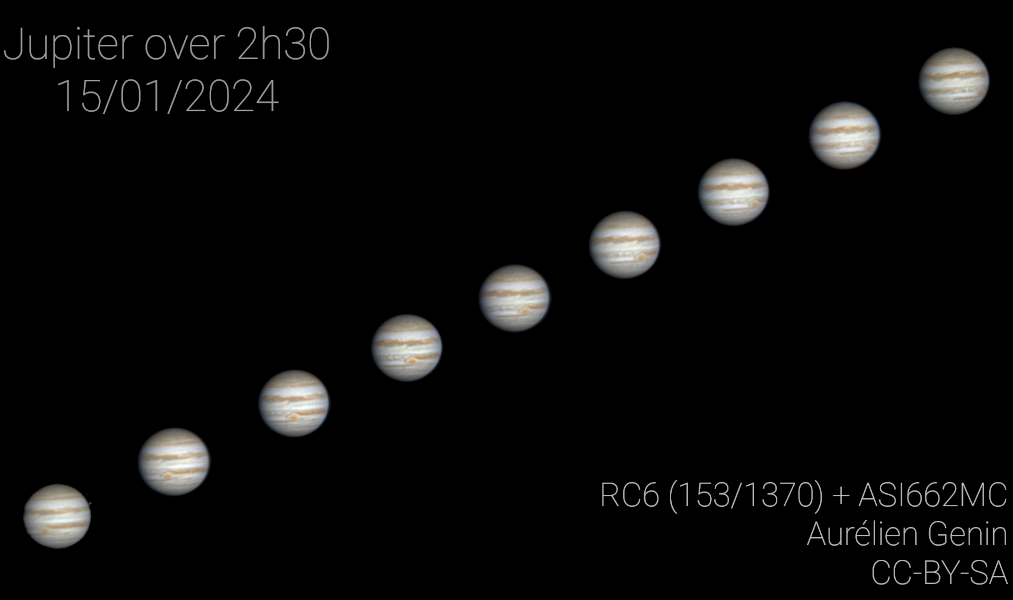안녕하세요, 잡학다식 입니다. 오늘은 과연 나사에서 어떤 방식으로 우주의 형상을 표현해 줄까요?
우선 이미지부터 볼 수 있도록 하겠습니다

해당 사진의 이름은 Jupiter over 2 Hours and 30 Minutes 인데요 우선 NASA에서 공식적으로 발표한 설명들을 확인해 보겠습니다
Jupiter, our Solar System's ruling gas giant, is also the fastest spinning planet, rotating once in less than 10 hours. The gas giant doesn't rotate like a solid body though. A day on Jupiter is about 9 hours and 56 minutes long at the poles, decreasing to 9 hours and 50 minutes near the equator. The giant planet's fast rotation creates strong jet streams, separating its clouds into planet girdling bands of dark belts and bright zones. You can easily follow Jupiter's rapid rotation in this sharp sequence of images from the night of January 15, all taken with a camera and small telescope outside of Paris, France. Located just south of the equator, the giant planet's giant storm system, also known as the Great Red Spot, can be seen moving left to right with the planet's rotation. From lower left to upper right, the sequence spans about 2 hours and 30 minutes.
이번에도 광활한 우주 앞에 인간이 얼마나 작은 존재인지 다시 한번 알게 되는것 같습니다
저는 내일도 더 좋은 사진과 함께 돌아오겠습니다, 그럼 행목한 하루 되시길 바랍니다
'과학상식' 카테고리의 다른 글
| NASA 나사의 오늘의 이미지들 (2024-01-21) (0) | 2024.01.22 |
|---|---|
| NASA 나사의 오늘의 이미지들 (2024-01-20) (0) | 2024.01.21 |
| NASA 나사의 오늘의 이미지들 (2024-01-18) (0) | 2024.01.19 |
| NASA 나사의 오늘의 이미지들 (2024-01-17) (0) | 2024.01.18 |
| NASA 나사의 오늘의 이미지들 (2024-01-16) (0) | 2024.01.17 |